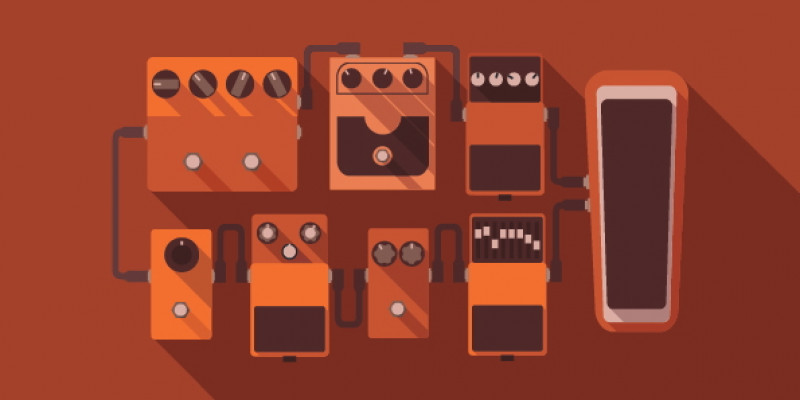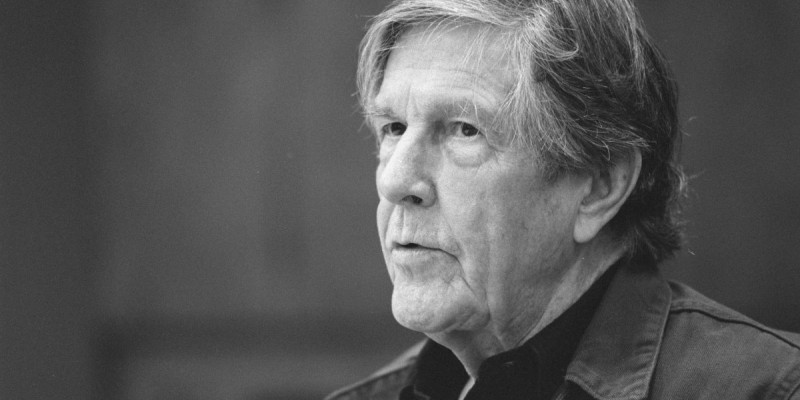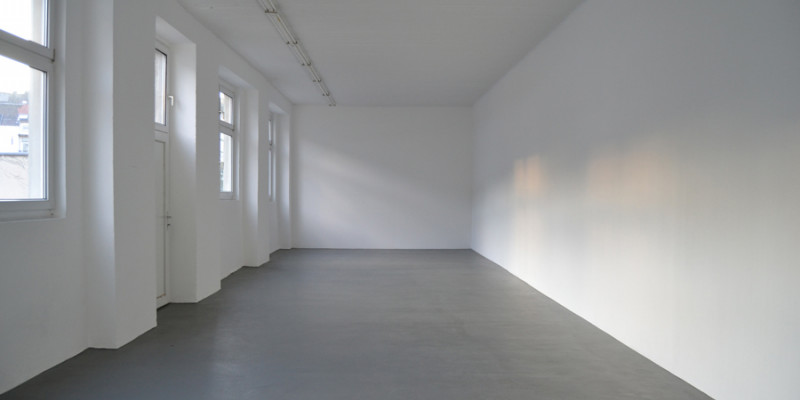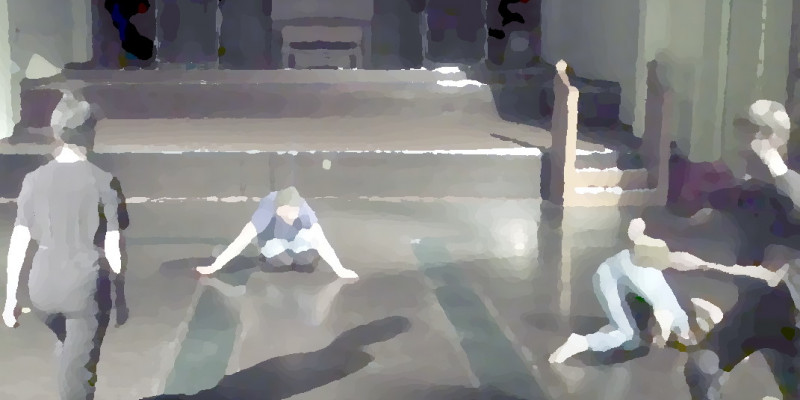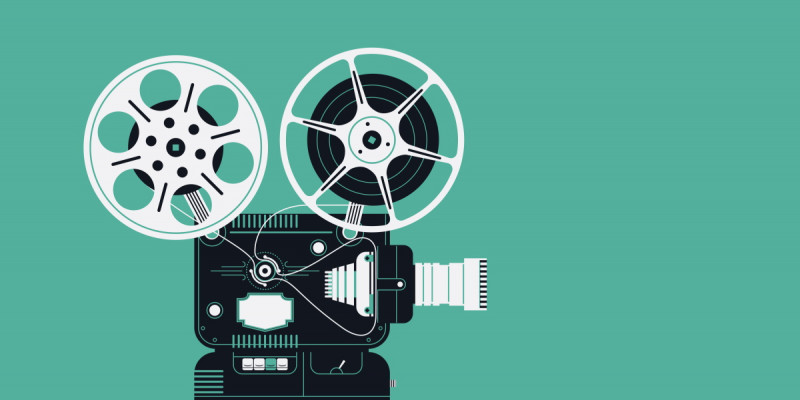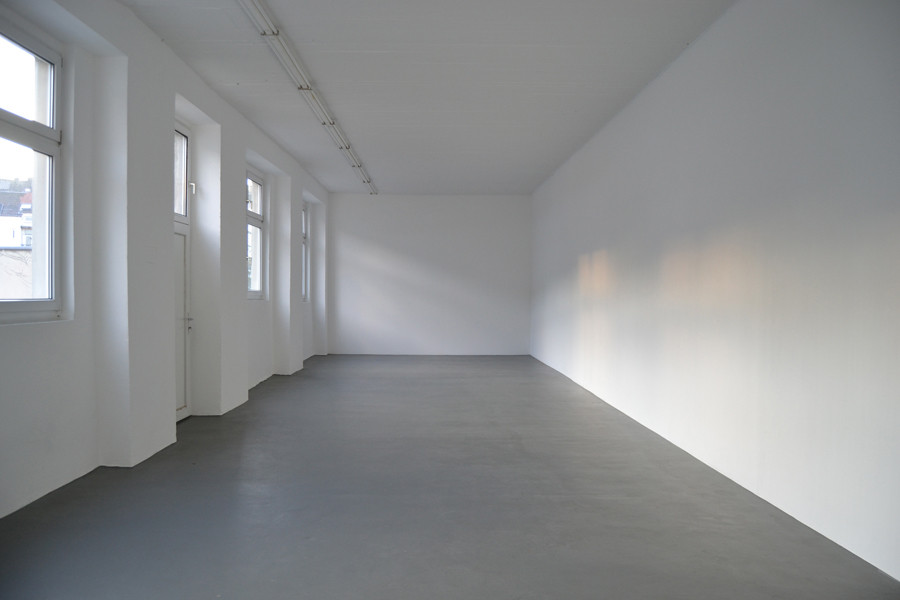
The institutional situation of so-called sound art
Abstract
The article presents a curatorial reading of Bruce Nauman’s sound installation Für Kinder (2011) in the context of its presentation at the ZKM Center for Art and Media in Karlsruhe during the Sound Art – Klang als Medium der Kunst exhibition in 2012. It uncovers and critiques ideas of pure sound or sound-in-itself, some of which have become internalised truisms that seem to haunt the field of sound art curating.
Departing from critiques of the white cube within the visual arts and the audio-visual litany within sound studies, this article argues that sound art studies have largely neglected the historical, social, and cultural contexts, and especially the situatedness of its listeners, artworks, and exhibitions in favour of a one-to-one, unmediated relation between artwork and listener that is seldom contextualised. A post-medium approach that evaluates and presents sound art in a broader cultural and contextual field has thus become necessary for the term to have relevance as other than an art historical category.
1. Introduction
In September 2012 I visited the now seminal exhibition Sound Art – Klang als Medium der Kunst at the ZKM Center for Art and Media in Karlsruhe, Germany. In my mind, I have returned to this exhibition continually ever since, and each time one installation stands out: Bruce Nauman’s Für Kinder[1]. The piece is a stereo sound installation where Nauman’s voice is heard repeating over and over the words “für Kinder, für Kinder, für Kinder” with a strong American accent. The installation’s four speakers are hidden within the walls of a rectangular white space, which at the ZKM was sufficiently sealed from the rest of the surroundings to enact its own white cube both on auditory and visual levels.
The sparse textual information given when scanning the QR-code on the wall revealed that Für Kinder is inspired by a press release about the Hungarian composer Béla Bartók’s piano pieces by the same title from 1908-09 that Nauman came across. These etudes are relatively simple beginner-level piano exercises composed on the basis of Hungarian and Slovakian children’s melodies and folk songs. While the first exercises in the two-book volume are fairly easy, the degree of difficulty progresses throughout the latter part of the second book, which presents the young pianist with more complexity.
However, as Nauman has explained to Noemi Smolik (Smolik 2011) there is a little more to the Bartok reference. In an interview in Frieze d/e he detailed how he used to play these pieces with his son:
I remembered when my son was learning to play piano, I got him the composer Béla Bartók’s pieces For Children (1908) which are very simple pieces written for small hands, so I could play a duet with him. So I remembered that and thought, What would I do as an exercise for children of art? (Smolik 2011, n.p.)
At danger of stating the obvious, it seems that the playful and almost childish simplicity that Nauman employs in this installation wants to direct our attention toward the white cube as the most elementary building block of art – a kind of structural grammar and basic knowledge (as those of musical notation and correct fingering) that one must learn to understand, navigate, and internalise before acquiring more advanced skill and virtuosity.
2. So-called sound art
By opening this article with the example from the ZKM, I do not aim to engage in criticism of an exhibition that was shown seven years ago, although my critique has been partly reinvigorated by main curator Peter Weibel’s article in the recent publication of the 700+ page catalogue from that exhibition (Weibel 2019).[2]
However, the Sound Art – Klang als Medium der Kunst exhibition at the ZKM and its relation to the particular piece by Nauman does set the scene for a more fundamental discussion of sound’s relation to the white cube and concomitantly a discussion of sound art’s relation to the institutionalised space of the museum gallery exhibition within which it is often encountered. This is a discussion that is relevant beyond the critique of a single artwork or exhibition. My interest in these matters comes from a curatorial interest with sounding arts, in which I am particularly oriented towards the situational and relational aspects of sound and listening.[3] That is, an interest in the social and cultural contexts within which audiences encounter sounding artworks.
To pursue these questions, my article presents a reading of Nauman’s installation in the context of the entire exhibition as a curatorial unit. However, as curator and critic Simon Sheikh has noticed, it is difficult to view an exhibition within the context of the gallery space as an isolated theoretical object because it is already historically and ideologically ingrained and naturalised in the ways we tend to think about art and its presentation (Sheikh 2011, pp. 18-19, my translation). In other words, there are social and historical conventions that enable us to recognise exhibitions as exhibitions in certain contexts.
This means that I also look at an important context for such exhibitions, namely the scholarly discourse and theoretical positions around the term sound art. Combining these elements, this article claims that the institutional context of presentation within the white walls of the gallery space is often overlooked, naturalised, or taken for granted as part of sonic discourse’s attempts to liberate itself from a supposed visual and textual hegemony. Almost as if sound art discourse exists in a vacuum free from the institutional baggage that has permeated discussions within the visual arts at least since the 1960s. Or as if sound itself could subvert this baggage alone by its supposed liberatory power.
It is evident that the Nauman piece addresses this set of larger institutional concerns quite literally, as does indeed much other artistic work with sound over the past six decades. One need only think of John Cage’s 4’33’’ (1952) or the activist collective Ultra-red’s (1994 and onwards) practice to find iconic work that one way or another employs sound as a central element to address political, social, and institutional structures.
It is equally evident that a lot of these efforts have been carried out outside or on the fringes of the established institutional format of the exhibition. Aforementioned Ultra-red is an example of this, as is also the activist idea of aggressive listening practiced by Danish artists Claus Haxholm and Tobias Kirstein (Haxholm, Kirstein, and Holmboe 2018; Holmboe 2019, pp. 126-132) or Salomé Voegelin’s live curatorial performance-lectures alongside various forms of sound-walking, field recording, site-specific, performative, relational, and conceptual work that incorporates or publishes sound. Thus, it is important to contextualise my critique by noting that exhibitions today can be almost anything. Concerning exhibitions which go beyond the museum or gallery space, curator Hans Ulrich Obrist has spoken about
[...] dematerialised exhibitions; there are exhibitions that come to the home of the spectator [...]. There are all kinds of possibilities, time-based, space-based, dematerialised... (Malzacher, Tupajic & Zanki 2011, p. 46)
Inside and outside of the gallery space just about any activity or display that presents and/or represents a curatorial or artistic idea within the field of contemporary art can be and has been designated an exhibition. The multifarious ways that sound is employed in contemporary art is indeed an example of “the fact that many contemporary aesthetic practices no longer correspond to the conditions for which the white cube was built” (Filipovic 2014, p.48).
Despite this diversity of possibilities in contemporary understandings of exhibitory efforts, my concern in this article is with the category of the exhibition as it unfolds within the narrower context of the museum gallery space and including the possibilities and restraints offered by this setting. Related directly to sound within this context, in the recent publication ensuing from the ZKM exhibition Linnea Semmerling details how artists have worked critically with sound within the white cube to question some of the fundamental social and cultural codifications of this space (Semmerling 2019).
As such, the issue at stake here is not that there is a lack of relevant sound focused artwork doing this. Rather my critique is directed at the reception, exhibitory contexts, and curatorial framework within which sounding artwork is often discussed and presented. A framework where the criticality and levels of institutional awareness that surrounds the notion of the white cube within curatorial reflexivity has not quite travelled the distance from the visual to the auditory domain. It seems quite simply that critical thought within curatorial discourse when concerning itself with sound art drops to a level where the institutionalised space of the gallery is often left unquestioned in favour of a general set of assumptions concerning an almost naturalised view of sound as intrinsically critical in itself and as a liberating antithesis to the visual hegemony and codified prescriptiveness of white cube.
By the end of my visit to the ZKM, I left the museum with a slightly empty feeling. I was overwhelmed by the grandeur of the architecture (it was my first visit to the institution) and by the multitude of sensory impressions (perhaps one day was not enough) heaped together in the exhibition. Except for my experience with the Nauman piece and a few other genuine surprises, I was disappointed to see how the institutional setting had overpowered the potential of the individual works. For the first time in my life, I had been able to experience in situ a lot of the iconic works of sound art that I had previously only read about or encountered through means of documentation.
But at the end of the day, I felt that I had been shown and told (Bennett 1988, p. 99) what sound art was rather than been engaged, questioned, and challenged in my previous assumptions about it. The exhibition showed, more or less, what I had been expecting: A large, now partly canonised, selection of works that focused on the aesthetic potentials of sound as a self-contained medium, presented in various thematic and historic sections and primarily centring on interactive or immersive forms of engagement and/or embodied sensory perception. The physical encounter with the works did not add much to what I already thought I knew in advance.
Moreover, in chief curator Peter Weibel’s contribution to the pamphlet-like catalogue that originally accompanied the exhibition (Weibel 2012), sound art was presented through a historic narrative that emphasised how noise from its futurist moment had liberated sound itself from the narrow confines of Western music, primarily via means of the visual arts and technological progress. In essence this is a myth that constructs sound art as an antithesis to the narrow structural and institutional conventions of Western music and renders sound somehow capable of emancipating itself and, importantly, the listener from these conventions.
In Weibel’s case however, it ends up in a kind of new sonic essentialism that does not take its own structural and institutional point of departure into account. It does not reflect adequately on the codified conventions of the visual arts (or, for that matter, the prolongation of romantic and modernist performance rituals in 20th-century experimental and avant-garde music), nor does it take the social consequences of its own techno-determinism into account. Rather it remains within the avant-garde or neo-avant-garde ethos that most other histories of sound art (Kim-Cohen 2009; Licht 2007; Kahn 1999; de la Motte-Haber 1999) have also variously emphasised.
Perhaps this all went wrong when someone invented the term sound art. As one of the pioneering artists in the field, Max Neuhaus, has ironically stated that it is in many cases
[...] as if perfectly capable curators in the visual arts suddenly lose their equilibrium at the mention of the word sound. These same people who would all ridicule a new art form called, say, “Steel Art” which was composed of steel sculpture combined with steel guitar music along with anything else with steel in it, somehow have no trouble at all swallowing “Sound Art.” (Neuhaus 2000)[4]
This pretty sarcastic remark portrays a dissatisfaction with the one-sided focus that a term such as sound art might put on sound itself. Neuhaus’ point is that sound art is too broad a term because it can designate almost anything that somehow relates to a vague notion of sound. And, on the other hand, that much of what is called sound art can as easily be understood as “musics with a new name” (Neuhaus 2000). The central objection is thus that in art “the medium is often not the message” (Neuhaus 2000).
A term such as sound art (and the attempts to delimit and define it within the past two to three decades) does in fact reminisce a modernist penchant for medium-specificity. The idea that sound art is primarily focused on investigating its own medium echoes Clement Greenberg’s (in)famous emphasis on painting’s preoccupation with the flatness of the canvas and his insistence on clearly drawing boundaries between the different media within the visual arts[5]. As Greenberg put it:
The essence of Modernism lies, as I see it, in the use of the characteristic methods of a discipline to criticize the discipline itself – not in order to subvert it, but to entrench it more firmly in its area of competence. (Greenberg 1982, p. 5)
G. Douglas Barrett has described how sound art discourse’s preoccupation with sound’s medium-specificity is essentially “Greeenbergian”. With reference to Neuhaus, he argues that the term is a “taxonomical short cut between material and medium” (Barrett 2016, p. 5) and thus, that sound art and absolute music are essentially the same in their rendering of sound “as an autonomous medium” (Barrett 2016, p. 5).
While attempts to try and define sound art on the basis of the medium have certainly had their historical relevance in establishing a critical vocabulary and in trying to delimit, justify, and secure economic and institutional support for emergent artistic and scholarly practices, I think it is now time to move on. It is not only as per Max Neuhaus that almost anything is somehow related to sound, or as per Linnea Semmerling (Semmerling 2019), Caleb Kelly (Kelly 2017), or Salomé Voegelin (Voegelin 2014b) that the gallery is always already saturated by sound and/or silence.
Taking the lead from Barrett, it is also clear when looking at the contemporary art scene more broadly that such insights are already internal to many artistic practices where sound has entered a much wider field of expression without necessarily turning art that employs sound into an entrenched area of competence whose identity rests on a primary concern for the medium-specificity of sound itself. As such, sound is an integrated material in much contemporary art that can be used alongside moving images, performative acts, installation objects, conceptual elements, sculptural forms, distributed formats, collaborative interventions, etc. to different sensual, perceptual, conceptual, and communicative means within a single artist’s single work or project.
From the point of view of a curatorial criticality, it is also clear that the essentialisms implied by a focus on sound’s medium-specificity prohibit more open frames for the understanding and presentation of artistic practices as being first and foremost embedded in cultural and social contexts. The medium-specific approach thus also carries with it an (unspoken) remnant of modernist autonomy. Art that is primarily about sound itself then seems to be a vague curatorial category to work from if we want to address issues that go beyond the narrow confines of (a small corner of) art history. In acknowledgement of this post-medium perspective it seems that, as a term, sound art needs to escape some of the entrenchments within its own discourse in order to become relevant outside an enthusiastic but small circle of aficionados, and relevant as as more than an anachronism.
3. Pure sound
In the recently published catalogue from the ZKM exhibition, Weibel also stresses the spatial elements of sound through a historical exposition of architectural endeavours with so-called sound pavilions such as Iannis Xenakis and Le Corbusier’s famous Philips Pavilion constructed for the 1958 World Fair in Brussels. In tandem with the focus on medium-specificity, this exposition also expressed a wish to accommodate sound in space with a form of exhibitory transparency where “one hears truly the pure sound and nothing else” (Weibel 2019, p. 64).
This idealised image of purity becomes the vehicle for a radical decontextualisation and aestheticization of all sound, which has lately been forcefully critiqued by Seth Kim-Cohen under the headings of sound-in-itself (Kim-Cohen 2009) and ambience (Kim-Cohen 2016), as well as by Will Schrimshaw under the heading of immersion (Schrimshaw 2015; Schrimshaw 2017). In short, their critiques can partly be summarised as extensions of Jonathan Sterne’s attacks on the audio-visual litany within sound studies (Sterne 2003, pp. 10-19). According to Sterne, the audio-visual litany comprises a set of essentialist and almost naturalised binaries about the differences between the auditory and the visual. The list of binaries goes as follows:
hearing is spherical, vision is directional;
hearing immerses its subject, vision offers a perspective;
sounds come to us, vision travels to its object;
hearing is concerned with interiors, vision is concerned with surfaces;
hearing involves physical contact with the outside world, vision requires distance from it;
hearing places us inside an event, seeing gives us a perspective on the event;
hearing tends toward subjectivity, vision tends toward objectivity;
hearing brings us into the living world, sight moves us toward atrophy and death;
hearing is about affect, vision is about intellect;
hearing is a primarily temporal sense, vision is a primarily spatial sense;
hearing is a sense that immerses us in the world, vision is a sense that removes us from it. (Sterne 2003, p. 15)
The general thrust of Kim-Cohen’s criticism is that an exaggerated focus on the aural, affective and immersive side of the litany ends up in an uncritical and essentialist “phenomenological cul-de-sac” (KimCohen 2009, p. xix) that he sees in sound art reception and theory in general, and in contemporary sound art exhibitions in particular, as a flow “away from conceptual concerns and back to mute perception” (Kim-Cohen 2016, p. 4). From a different philosophical perspective, Will Schrimshaw has argued similarly that the tendency to focus on immersion in contemporary art in general, and sound art in specific, seems to be a “new orthodoxy” where “the immersive is routinely championed as an experiential quality whose value is inherent yet strengthened through opposition to the visual” (Schrimshaw 2015, p. 155).
Inherent to the distinction between the auditory and the visual and the idealisation of pure sound which it seems to rest upon, we thus find several other unhealthy dichotomies. The tendencies to value affection over intellection, interiority over exteriority, raw sense experience over discursive knowledge production, and perception over signification are all rooted in the audio-visual litany and thus comprise some of the idealisms that circumscribe sound art discourse. Cast as such, the focus on the medium-specificity of sound and on the purity of sonic experience imbues sound art discourse with a metaphysics of presence that inherently posits a transcendental subject (Sterne 2003, p. 18) that is only ever able to fully experience sound by immersing itself in it. Notably this form of immersion is predicated upon a liberation from the supposedly constraining entanglements of signification. The experience can only ever be understood or theorised a posteriori – once the immediate sensory event has passed.
Nauman’s installation does not afford such immersive listening. To me it is not about sound in any essentialist way. Rather, it uses sound as an integral element and as a material signifier that activates the white performative space of its audition as well as the conceptual layers of the work and its exhibitory situation. It is about the repetition of a set of institutionalised behaviours that all art in and all visitors to the gallery are confronted with. And in this repetition, sonic experience becomes an important tool to pry open the conceptual and historical layers that lie beyond immediate perception.
In the installation, the words “für Kinder” are looped from a few different recordings with slightly different, almost imperceptible, vocal accents. In this way it points very delicately to a kind of repetitious iterability that circumscribes the whole situation. Every time the loop repeats, it adds new meanings to the entire situation. The tiny vocal variations within the repetitive pattern work to sharpen my auditory perception. Not towards aesthetic appreciation of sound itself or the timbral qualities of Nauman’s voice, but towards the possible meanings that the differences in timbre inherently produce. The perceptive and the conceptual are thus tied very closely together as the sound of Nauman’s voice continually folds into the bigger cultural picture and vice versa. To put that in other terms is to say that auditory perception itself serves to obscure any perceived immediacy between sound and listener. Like a “Verfremdungseffekt” based on perception itself.
As such the installation is also about paying close attention. Both to the obvious (and generalisable) institutional situation and to the confines of the specific white cube that I find myself within – that is to the words Nauman is saying in the setting where he is saying them. It is also about paying close attention to the small differences in vocal intensity and sonic quality that make this institutional situation felt on my body and through my sensory apparatus – that is to the subtle qualities of sound and voice that are often unnoticed or only unconsciously apprehended in daily communication, but nevertheless make up important elements of it. Here, these subtle differences are highlighted and made perceptible by the continuous looping of a few sequences of sound. I do not listen to Nauman’s voice for its purely sonico-aesthetic qualities. Rather I listen to it as a rendition of a socio-techno-lingual form of communication that highlights its own situatedness.
At stake then is an issue of absence and presence and the ways in which these are continually folded into one another rather than being mutually exclusive. At the level of the individual exhibition my presence within the Nauman installation was thus predicated upon the immediately preceding moments of presence in the company of other artworks. Their immediate perceptual absence did not exclude their conceptual presence and of course, the whole situation of experiencing this vast exhibition inflicted my experience of this one work. It somehow seemed to me that the Nauman installation was commenting on the entire exhibition – or at least summarised part of my experience with the exhibition.
Moreover, it is of course not only the immediately absent that predisposes the present. One of the reasons I found this piece immediately interesting within the setting of this particular exhibition was probably my ongoing interest in practices of institutional critique and in the contradictions inherent to the relation between the institution and various avant-gardes. That is to say that my own idiosyncrasies greatly determined my engagement with this particular installation, as well as the whole exhibition.
Lastly, and most importantly for this argument, Nauman’s engagement with the white cube as a perceptual and conceptual convention rests on a large historical and contemporary corpus of theory and internalised behaviour among curators and exhibition visitors alike.
4. The white cube
From an acoustic point of view, it is evident that the Nauman piece reverberates quite literally within the walls of the specific gallery in which it is shown. In fact, every sounding artwork does this – and this acoustic, material condition is always negotiated on a practical level when curating sound. How does this sound? Does it sound alright? Do the acoustics of the gallery space support or obstruct the sound? Is the sound disturbed, masked, marked, or interfered with by other sounds, and is that a problem for the particular artwork?
Basic practical questions like these are part of the day-to-day operations of curators involved with sound. As curator Caleb Kelly has stated, the practical issues of the white cube in relation to sound have been a point of discussion for curators and artists since the late 1960s, although not much has been written about it (Kelly 2017, p. 20). This lack of theorisation is even more glaring when it comes to the interrelated conceptual and institutional underpinnings of the relationship between sound and the white cube. In literature on sound art and curating these practical conditions and their subjective phenomenological counterpoints seem too often to stand in the way of other, more critically founded political or social interpretations of the sounding situation in total.
Despite works such as Nauman’s Für Kinder, or the ones that Semmerling mentions (Semmerling 2019) which engage directly with the auditory codifications of the white cube, curatorial effort has more often than not been a matter of creating as ‘transparent’ as possible a relation between sound and listener in an attempt to render the gallery space itself invisible and (in many cases) inaudible. Kelly advances the timely argument that:
Sound is formed within the gallery, within ideologies of art practices and within the bounds of social pressures, and sound is framed by expectations and social norms when it enters the art institution. (Kelly 2017, p. 18)[6]
In this line of argument, the appearance, history, and ideology of the gallery space obviously determine and work as a frame for the experience of sounding artworks despite sound’s supposed liberatory power. Any idea of a perceptual or material boundary between the sonic and the visual then becomes porous and permeable as does the idea of a listening that is not affected by the visual appearance and conceptual underpinnings of the environment within which it takes place.
The white cube itself has been famously theorised by artist and critic Brian O’Doherty in his series of essays in Artforum from 1976, collected in the volume Inside the White Cube. The Ideology of the Gallery Space (O'Doherty 1976). In these essays he analyses how the gallery space is saturated by culture and ideology contrary to common belief held at his time and how
[...] for better or worse it is the single major convention through which art is passed. What keeps it stable is the lack of alternatives. [...] The gallery space is all we’ve got, and most art needs it. (O'Doherty 1976, pp. 80-81)
Even if his analyses seem anachronistic in the light of contemporary dispersed art and exhibition practices, and even if O’Doherty’s essays are primarily aimed at commercial New York galleries in the 1970s, there is a certain actuality to his argument given the fact that most exhibiting institutions have to some extent adopted some version of the white cube as their primary space of exchange with their audiences.
Related to my above analysis of the ideology of pure sound it is also worth mentioning the works, writings, and concerts of Francisco Lopez where audiences are literally blindfolded (Lopez 2004); as well as the significance and mythical afterlife of John Cage’s famous experience in the anechoic chamber where, in this acoustically silenced room, he heard nothing but himself, and thus effectively eliminated any outside in favour of an inward journey into listening (Cage 2004, Nyman 1999). Or Pierre Schaeffer’s ideas of a reduced listening (Kane 2014) and their extension into the darkness of Salomé Voegelin’s listening (Voegelin 2010; Voegelin 2014a).
These examples show the deep roots of the preoccupation within sound art and its related discourse with listening as a way to shut out the visual as well as the profanity of the everyday in favour of an immersed aestheticized form of perception. In prolongation of these descriptions and imaginaries of purity it also appears that they constitute the exact same ideological division between sound and sociality as does the ideology of the white cube.
However, following curator and critic Simon Sheikh’s reading of O’Doherty it is clear that
[...] the gallery space is not a neutral container, but a historical construct. Furthermore, it is an aesthetic object in and of itself. The ideal form of the white cube that modernism developed for the gallery space is inseparable from the artworks exhibited inside it. Indeed, the white cube not only conditions, but also overpowers the artworks themselves in its shift from placing content within a context to making the context itself the content. However, this emergence of context is enabled primarily through its attempted disappearance. The white cube is conceived as a place free of context, where time and social space are thought to be excluded from the experience of artworks. It is only through the apparent neutrality of appearing outside of daily life and politics that the works within the white cube can appear to be self-contained – only by being freed from historical time can they attain their aura of timelessness. (Sheikh 2009, n.p.)
The points that Sheikh are making about context becoming content and the apparent neutrality of the white cube can be stretched beyond the visual field. While the idea that context becomes content applies very directly from an auditory point of view in case of the Nauman installation, the ideas of the white cube’s supposed neutrality relates to a more general level. As art historian Theis Vallø Madsen has remarked, the idea of art as independent from reality subsists even though the concept of autonomy has become frayed around the edges and even if museums and art institutions have partly departed from the idea. Madsen sees the characteristics of the white cube in our imaginaries about cyberspace: “Just as the noisy, surrounding reality is entering the museum gallery the imaginary of the pure white cube converts into an image of virtual space” (Madsen 2015, p. 180, my translation).
This can be mapped more or less directly to Weibel’s ideals of an exhibitory transparency for sound art where “one hears truly the pure sound and nothing else” (Weibel 2019, p. 64) showing, once again, one of the recurring tropes that runs through sound art discourse on several levels. As such, it is a trope that performs more or less the same kind of reductionism as the one that O’Doherty originally criticised and identified in 1976 as an ideological construct.
5. Sounding the white cube
In O’Doherty’s analyses it is evident that the critique of the white cube is rooted in the visual arts and accordingly that the gallery is primarily understood as a space that regulates spectatorship. As architect and curator Mark Wigley pointed out in a lecture given at Louisiana Museum of Modern Art in 2015, the white cube is actually
[...] not a white cube. The walls are white, the floor is wood, the ceiling is dark. It is the vertical that is the clue, which places the work for the horizontal gaze. (Wigley 2015, n.p.)
This lends emphasis to the visual and spatial metaphors developed by O’Doherty and others. It also emphasises and makes clear the implicated distance to be negotiated between the perceiver and the perceived. As Mark Wigley has further stated,
[...] you don’t need a white wall for the white wall to do its work. [...] Even if you paint a museum wall black, it is a white wall that has been painted black. (Wigley 2015, n.p.)
Obviously, this speaks to the pervasiveness of the institutional and discursive trope of the white cube and to the ways in which it conditions curatorial effort and audience behaviour. However, looking at the threshold between perceiver and perceived from the perspective of sound, constitutes a slightly different kind of encounter – even if it is also partly informed and encoded by the conventions of visual art. If the white cube is rendered a “placeless” space as O’Doherty stated (O'Doherty 1976, p. 27) and still today constitutes the default and “favored modus operandi for exhibition-making – as the dominant model for the showing of art” (Sheikh 2009, n.p.), then the specific layout of any concrete gallery space would seemingly matter less within the perceiver-artwork encounter because it is already generalised. Yet, that is not necessarily the case if we approach it from a situated auditory perspective.
Every room has different acoustic properties and sound changes with the movement of the listener relative to the sound source and surrounding surfaces and architecture. Distance and proximity mean something different from an auditory point of view compared to a visual one. Listening is not horizontal and the way that visual objects interact, compartmentalise, or block out each other is more distinctive than the ways in which sounds blend, bleed, and gradually fade and phase into and/or shade one another. From a purely auditory point of view, absence and presence are thus negotiated differently and more fluently than from a purely visual point of view. These observations form the immediate background for the practical curatorial questions regarding installation of sound in space that I touched upon in the above. And as such, they also partly help to naturalise the ideas within the audio-visual litany of a sharp distinction between the auditory and the visual domains.
However, sharp distinctions like these are difficult to uphold in real life. My experience with the Nauman installation in the particular exhibitory setting at ZKM points to something different, to a notion of situatedness as central for the understanding of the experience. A perceptual, social, and historical situatedness of the viewer/listener, of the artwork, of the curatorial and exhibitory setting and all of their contexts alike. A social, historical and material situatedness that existing sound art theory has more often than not failed to develop in all aspects. Perhaps because of the sharp distinctions between the auditory and the visual and the beforementioned entrenchments within this (academically speaking) still relatively new field.
Such entrenchments are most evident in the opposition between e.g. Salomé Voegelin’s reductionist phenomenological approach (Voegelin 2010; Voegelin 2014a) that centres on the listening subject on the one hand and, on the other, Seth Kim-Cohen’s contextualist endeavour (Kim-Cohen 2009; Kim-Cohen 2016) that focuses on the situatedness of the artwork or exhibition while downplaying the role of listening. It is also evident in Weibel’s idea of pure listening with its inherent wish to shut out the profanity of all that is outside of a medium-specific focus on sound that has liberated itself from the supposedly narrow institutional confines of music. In fact, Weibel unknowingly constructs a conceptual white cube as an ideal for sonic experience. Another imaginary white cube within the physical one.
First and foremost, the consequences of this construction become visible in the very work-centred approaches that all of these positions seem to apply – notwithstanding their differences – in which they all, one way or another, focus on the direct, unmediated relation between listener/viewer and artwork as the primary site for the generation of meaning. Of course, my own example with the visit to the ZKM takes a somewhat similar approach by using my experience with the Nauman piece as the motor for this article. However, as I hope is clear by now, my intention is to try to widen the perspectives on how we might engage with sounding arts and the contexts they are entangled in, by narrowing down the gap between the entrenchments within sound art discourse. What we need is a more inclusive approach that takes the auditory not as a separate field, but as a field intermingled with others, as well as an approach that is not so concerned with what sound art is but that rather looks at how it acts and interacts with, and within, a wider cultural and enculturated field.
The notions of situatedness and enculturation points to a performative understanding of sound art and sound art exhibitions that can open up a theoretical field where both the artwork, the context of presentation, and the listener can be acknowledged as equally important instead of focusing narrowly on the relation between artwork and listener. I take this notion of situatedness from Donna Haraway (Haraway 1988) as a way to acknowledge that sonic knowing is always necessarily inconclusive, but that this inconclusiveness nevertheless is what warrants it as knowledge. From this feminist and performative perspective, knowledges are always in the plural qua their situatedness and thus the perspective tries to escape the universalisms that tend to underlie the more entrenched positions.
Haraway’s idea of situatedness is not only tied to a specific place or a specific historical or social context. It is also tied closely to the body, which Haraway understands as “complex, contradictory, structuring, and structured” (Haraway 1988, p. 589). As Annie Goh has remarked (Goh 2017, p. 292), situatedness in Haraway’s sense is thus about the “situatedness of the situated. In other words, it is a way to get at the multiple modes of embedding that are about both place and space” (Haraway and Goodeve 2000, p. 71). If the relations produced in the encounter with a sounding situation are bodily mediated in this way, it entails that knowledge is not only being constructed through a structuring body that perceives. Rather it is also a body that is already structured to perceive and to produce knowledge in certain specific ways as opposed to others. Thus being situated is not only about entering into a relational situation (as in the ones that sound engender), but also about taking one’s own situatedness as a precondition for any understanding of the situation, qua embodiedness, qua cultural inscription on one’s body, and qua the precepts embedded within these inscriptions and this situation.
Drawing on gender theorist Nikki Sullivan, sound scholar Marie Thompson has noted that perception is
[...] not considered a neutral process of mediation; nor something that a perceiving subject processes. Rather, perception is a shared, social and co-constitutive process that shapes and is shaped by knower and known, perceiver and perceived. It is an effect and vehicle of sedimented contextual knowledges, which ‘constitutes that which it presumes to merely apprehend’. (Thompson 2017, p. 273)[7]
Artworks, also sounding ones, are not merely statements that can be understood hermeneutically and neither are they merely material configurations that make up phenomena for perception. They are situated organisms that enable material-semiotic relations, the meanings of which depend on the situation they engender, the situation they are placed within, and the situatedness of their audiences.
If I had encountered Bruce Nauman’s Für Kinder on any other day than this particular one in September 2012, at any other exhibition than the Sound Art – Klang als Medium der Kunst, at any other institution than the ZKM, together with someone else instead of alone, it would have had a different effect. I would have understood it differently – perhaps even found it boring in all its minimal simplicity. Had I taken another way through the space and encountered the installation at the start instead of by the end of the exhibition, it would have had a different effect. Had I known more of Nauman’s work in advance – or less – this particular piece would have had a different effect. That goes for the idea of sound art in relation to exhibitions as well. Sound art was interesting at the time when we didn’t know what it was. Now we need to bracket it with a “so-called” in order to be able again to speak meaningfully about it. That was what the Nauman piece did to the exhibition at the ZKM.
[1] Accessed 30 September 2019. The piece was only installed for the latter part of the exhibition from 6 August 2012 until the exhibition closed in 2013.
[2] On a note of fairness to the many contributors to this exhibition catalogue (as well as the many co-curators of the exhibition), I should remark that my article only deals with Weibel’s contribution in his capacity of main curator as the overarching text that enframes the entire exhibition. I acknowledge that many sections of the exhibition were curated or co-curated by others and that this diversity within the exhibition design was one of the most invigorating initiatives.
[3] Much of the argument presented in this article is based on and developed as part of my Ph.D. research undertaken in close collaboration with The Museum of Contemporary Art in Roskilde, Denmark. In this project I addressed central curatorial issues for a sounding museology. Please see Holmboe, R. (2019).
[4] Quoted from http://theoria.art-zoo.com/sound-artmax-neuhaus (accessed 8 October 2019).
[5] I owe my colleague, curator at The Museum of Contemporary Art Magnus Kaslov, thanks for formulating my own unease about sound art theory’s obsession with the medium-specificity of sound in specific relation to Clement Greenberg’s essentialist modernism. This perspective was a point of departure in a paper he delivered at the Presenting Sound Art Conference on 5 December 2017 at the National Gallery of Denmark.
[6] See also Cluett, S. A. (2014) for a historical survey of exhibitions with sound art as a curatorial theme from the 1960s until today.
[7] Thompson quotes Sullivan, N. (2012).
